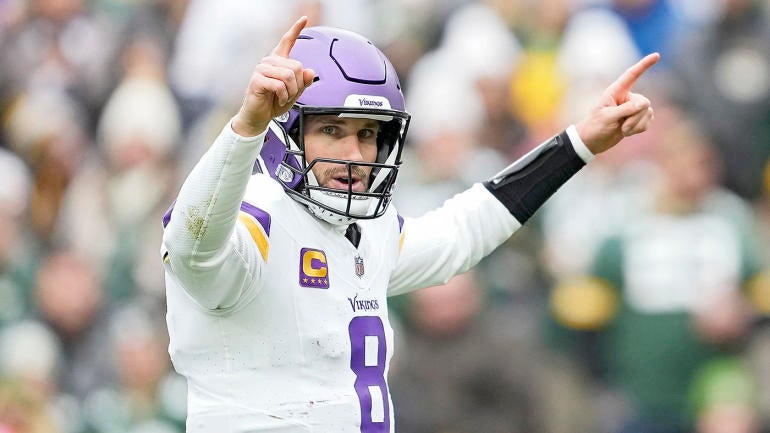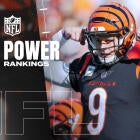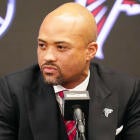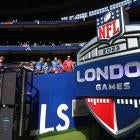
NFL teams and players got some unexpected good news on Friday. It was announced that the 2024 salary cap will be $255.4 million. Initial projections in December put the 2024 salary cap in the $240 million to $245 million range. The league's press release said, "the unprecedented $30 million increase per club in this year's salary cap is the result of the full repayment of all amounts advanced by the clubs and deferred by the players during the Covid pandemic as well as an extraordinary increase in media revenue for the 2024 season."
The $30.6 million jump is 13.61% more than the 2023's $224.8 million salary cap. The increase is a little less than in 2022 when the salary cap rose by 14.08% after a precipitous drop in 2021 because of the pandemic.
Every team benefits from such a dramatic increase. Here are five possible consequences of the higher-than-expected salary cap.
Dallas Cowboys
The Cowboys are caught between a rock and a hard place with quarterback Dak Prescott. This is Prescott's contract year and he has leverage in contract negotiations despite a subpar performance in an early playoff exit against the Green Bay Packers as the NFC's No. 2 seed.
Prescott's $59.455 million is the NFL's second highest 2024 salary cap figure behind Browns quarterback Deshaun Watson's $63.977 million while the Cowboys are currently $8.38 million over the $255.4 million salary cap, according to NFLPA data. He has a no-trade clause in his contract. Prescott also has a provision preventing Dallas from designating him as a franchise or transition player in 2025 should he play out his contract.
A contract extension will almost certainly make Prescott the league's highest-paid player. That distinction currently belongs to Bengals quarterback Joe Burrow. He received a five-year, $275 million extension, averaging $55 million per year, from the Cincinnati Bengals in early September as the start of the regular season was approaching. The deal is worth up to $281.25 million thanks to $1.25 million of annual incentives in the extension years (2025 through 2029). Burrow has $219.01 million of salary guarantees, of which $146.51 million was fully guaranteed at signing.
Restructuring Prescott's contract is a more viable option thanks to the elevated salary cap if an impasse is quickly reached in negotiations. Prescott is scheduled to make $34 million in 2024 consisting of an unsecured $29 million base salary and a $5 million fifth day of the league year roster bonus. Prescott's contract already has 2025 and 2026 contract years automatically voiding next March on the last day of the 2024 year. The automatic conversion rights in Prescott's contract allow the Cowboys to create up to $21.86 million of cap space by converting salary into signing bonus before the March 17 date of the roster bonus. Prescott's consent would be needed to add voiding/dummy 2027 and/or 2028 contract years. Dallas would have almost $13.5 million in cap space by prorating all but $1.21 million of Prescott's 2024 salary through 2026 with a contract restructure.
The downside is the Cowboys would be facing $58.32 million in 2025 dead money, a salary cap charge for a player no longer on a team's roster, by Prescott playing out his contract and testing the open market in 2025 free agency. The Cowboys would get a 2026 third-round compensatory pick at best from Prescott's departure in this manner.

With The First Pick Newsletter
With The First Pick Newsletter
Prepare for the upcoming NFL Draft with the day’s big stories + mock drafts, big board updates and more.
Thanks for signing up!
Keep an eye on your inbox.
Sorry!
There was an error processing your subscription.
Kansas City Chiefs
The Super Bowl LVIII champions are prioritizing re-signing All-Pro defensive tackle Chris Jones and cornerback L'Jarius Snead, who both have expiring contracts. One of the two is expected to be kept off the open market with a franchise tag.
Chiefs general manager Brett Veach and Jones' representatives are reportedly planning to have contract discussions at the NFL Combine, which runs from Feb. 27 to March 4. Jones and the Chiefs couldn't get on the same page during negotiations for a new deal last year. He engaged in the contract dispute that extended into the regular season. Modifications were made to Jones' remaining 2023 contract year to end his 51-day holdout without a long-term deal before preparations for Kansas City's second regular-season game against the Jacksonville Jaguars began.
Putting a franchise tag on Jones would have been extremely difficult if the salary cap had been set in accordance with the initial projections. Jones' franchise tag should be $32,169,912 because of how the 120% of prior year's salary provisions work with the designation. This figure would easily be the largest franchise tag for a non-quarterback in league history.
The Chiefs are within striking distance of having enough cap space to accommodate a Jones franchise tag should the sides remain far apart in those combine talks. Based on the NFLPA's information, the Chiefs have $19.83 million of 2024 cap room.
Obviously, contracts would have to be restructured. The most logical source for the necessary cap space is quarterback Patrick Mahomes. He has 2024's third-largest cap number at $58,608,269. As much as $34.832 million of cap room can be gained by converting $8.64 million of Mahomes' $9.85 million 2024 base salary and his $34.9 million May 5 roster bonus into signing bonus. By doing this, the Chiefs would be left with almost $22.5 million of cap space after a Jones franchise tag.
New Orleans Saints
The Saints have been the NFL's most aggressive and creative team in managing the salary cap by consistently taking a credit card approach where current obligations become future ones. This year isn't any different. The expectation was the Saints would need to clear over $80 million of cap space to be cap compliant when the 2024 league year starts on March 13.
There's less work for the Saints to do with a $255.4 million salary cap. The Saints have already started making a dent in the $67.5 million overage as $23.032 million of cap room was gained by restructuring quarterback Derek Carr's contract. An $8.975 million salary conversion with center Erik McCoy created $7.18 million in cap space.
The Saints might be able to add a key piece through free agency with slightly fewer cap challenges. A decade ago, the Saints were unexpected bidders for safety Jairus Byrd's services because of a tight salary cap. Nonetheless, he received the richest safety contract in NFL history to come to New Orleans.
Increased competition in free agency
The higher salary cap means more teams could be serious participants in the first wave of free agency. For example, the Las Vegas Raiders need to address their quarterback situation either in free agency or the 2024 NFL Draft. Pursuing Kirk Cousins could become a priority if he doesn't do a new deal with the Vikings before his 2024 through 2026 contract years void when the 2023 league year ends on March 13. Teams such as the Chicago Bears, New England Patriots, Tennessee Titans and Washington Commanders were going to be well-positioned to make a splash in free agency regardless of where the salary cap was set.
The agents of second- and third-tier free agents probably need to be careful with contract demands. It's typically become a buyers' market after the first couple of days of the free agent signing period when the second wave of free agency begins. It wouldn't be surprising for the market of such players to be overestimated thinking there will be a major trickle-down effect because of the increase in the salary cap.
Higher franchise tags
The cost of using a franchise tag went up because of the unanticipated changes in the salary cap. Where the salary cap is set matters because franchise tags are calculated over a five-year period that's tied to a percentage of the overall salary cap. More specifically, the number for each position is derived by taking the sum of the average of the five largest salaries in the prior year for each of the previous five seasons and dividing by the sum of the actual NFL salary cap amount for the previous five seasons. The resulting percentage, which is known as the cap percentage average in the NFL collective bargaining agreement, is then multiplied by the actual salary cap for the upcoming league year.
Bears cornerback Jaylon Johnson is a prime candidate for a franchise tag because he put himself in the shutdown cornerback conversation last season. His $19.802 million franchise number is approximately $1 million more than original projections.
The savvier agents will use the average of two franchise tags as a guide for a long-term deal when warranted. Taking this approach should give Johnson ammunition to replace Jaire Alexander as the NFL's highest-paid cornerback. The four-year extension Alexander signed with the Packers in 2022 averages $21 million per year.
A second franchise tag for Johnson in 2025 at a CBA-mandated 20% increase over his 2024 number would be $23,762,400. He would make slightly over $43.5 million from two straight franchise tags. The average of franchising Johnson twice in a row will be a little more than $21.75 million per year. If the original projections had held true, a contract between $20.5 million and $20.75 million could have been justified.





















